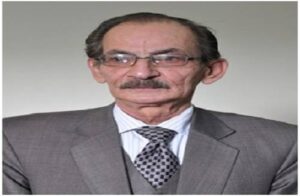
Op-Ed: At the joint invitation of the President of the French Republic and His Highness the Crown Prince of Abu Dhabi, an international Summit was held on December 2nd and 3rd, in coordination with UNESCO, for the protection of cultural heritage at risk in conflict areas. Afghanistan featured prominently in this Summit, firstly because of the richness of its heritage and secondly because of the frequent attacks that have jeopardizedit over the last decades.
The most recent destructions, which have been perpetrated on cultural heritage by terrorist groups in Syria, Iraq or Mali highlighted to the world the importance of preserving the historical heritage for each country, and beyond for the whole of humanity. As a matter of fact, building and keeping every nation’s unity implies the knowledge of its own history, and thus respecting and studying the heritage bequeathed by the generations that lived for thousands of years until ourmodern times, from archeological remains to contemporary audiovisual and digital archives.
This endeavor does not only concern the intellectual elites forthe national historic heritage belongs to every citizen, even the most deprived or the less educated. Heritage is indeed a constituent part of each citizen’s identity and helps shaping his cultural future. Preserving heritage and understanding its importance can also help shaping peace and understanding between the various sections of a Nation.
For so many years of occupation, civil war and terrorism, Afghanistan has suffered massive attacks on its heritage, be it the treasures of the Kabul Museum, the Buddhas of Bamiyan, the Herat Citadel and many other pre-Islamic or Islamic historical sites or treasures, intentionally destroyed due to ignorance or plundered by greed. As has Afghanistan also witnessed outstanding acts of conspicuous courage and dedication by institutions or simple citizens to save what could be saved. Sharing Afghanistan’s experience with other Nations in Abu Dhabiwastherefore particularly important, as is the restoration of historic buildings, in particular through the cooperation with the Agha Khan Development Network, or most recently the launching by President Ghaniof the reconstruction of Darulaman Palace conducted under the leadership of the Minister of Urban Development.
As of today, destructionsare no longer just the consequences of wars, such as those experienced by Afghanistan against the British in the 19thcentury or against the Soviets in the 20thcentury. Today, terrorist groups wilfully threaten cultural heritage. They want to destroy it to impose a falsified history or even to erase history of mankind and thus achieve their apocalyptic goals. But they do not just destroy: using networks of accomplices and traffickers well established in neighboring countries and linkedwith international art markets, these terror groupssell national treasures piece by piece to finance their terrorist actions, as they sell in bulkthe natural resources of the territoriesover which they gained control.
In Abu Dhabi, on December 2nd and 3rd, the delegations coming from all around the world sought to build a common vision on how to prevent damages to heritage in times of peace, and how to protect sites and works in times of war or instability. Furthermore, the delegations also soughtto build a common vision on how to preserve and rehabilitate the sites and works for the times to come. These discussions included topics such as the involvement of private partners and the mobilization of public opinion. Two proposals were on the table.
Delegations were invited to consider the establishment of an international fund to organize international solidarity for saving works and sites in dangeror restoring them if they have been damaged. This fund might also support the training of professionals dedicated to conservation and restoration of works and should involve public and private contributors.
Delegations also discussed the setting of an international network of countries offering safe havens for endangered treasures: preventive arrangements shouldbe made for evacuating the threatened works to sheltering countries, as well as conditions for their conservation and protection therein and eventually their return to their homeland country, once situation permits.
France proposed to make available a safe haven in the northern part of our country, within the city of Liévin’sbranch of the Louvre Museum. Currently, the French archaeological delegation in Afghanistan (DAFA), is working with Afghan authorities on a project initiated by President Ghani, in order to establish a digital archaeological map of the country. This will undoubtedly prove as a unique tool in the world which will be essential for the future preservation and protection of the sites that are being mapped.
France wishes to collaborate closely with our Afghan partners for the success of this initiative, and beyond to cooperate as closely for the sake of the protection of Afghan heritage, which is both millennial and contemporary. To this end, the support of the elected representatives of Afghanistan and the one of the population areessential because all Afghan citizens’ heritage is at stake. The education institutions will also prove crucial to ensure that new generations understand the importance of this endeavor.
ENDS
The author is Ambassador of France in Afghanistan.





